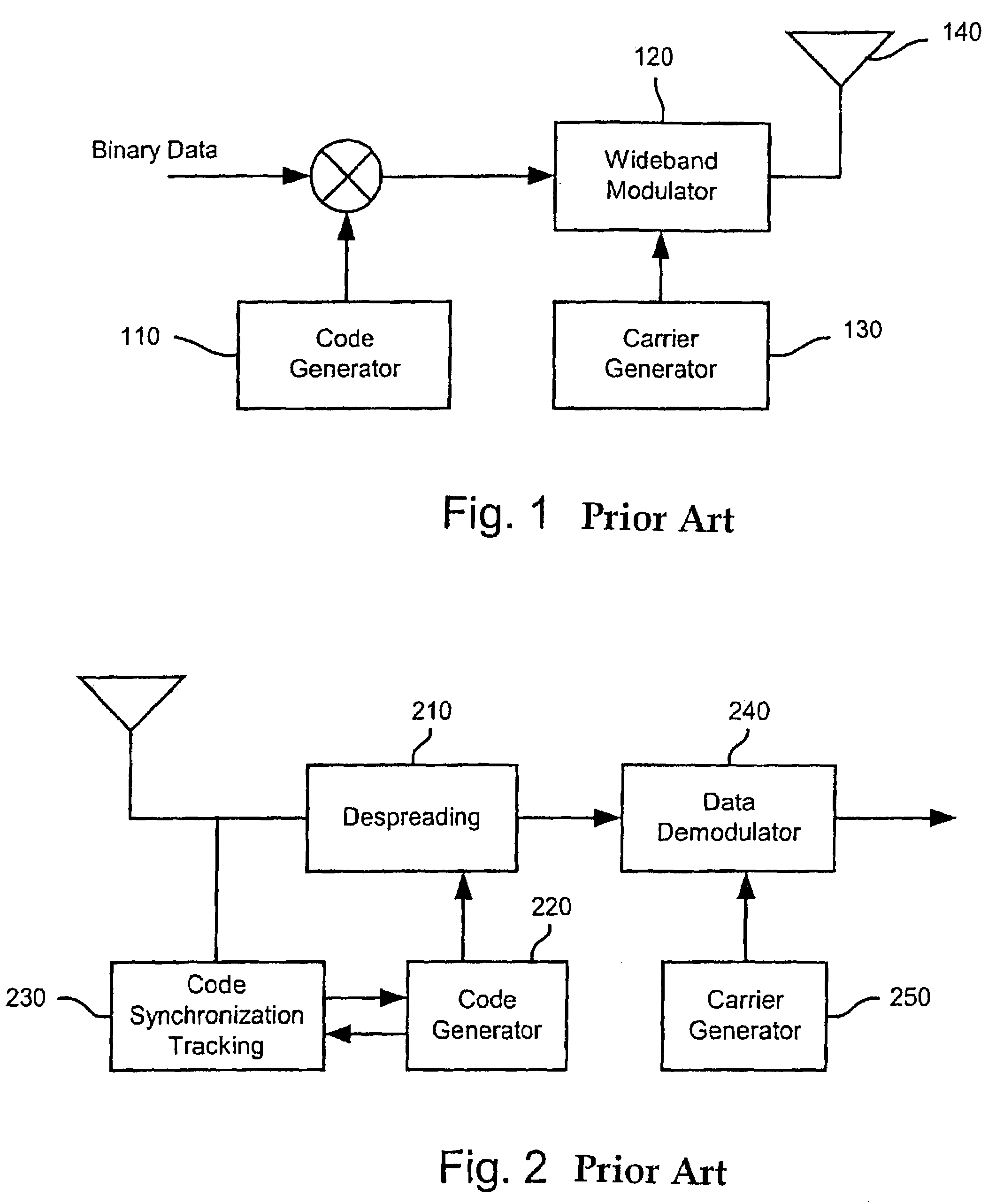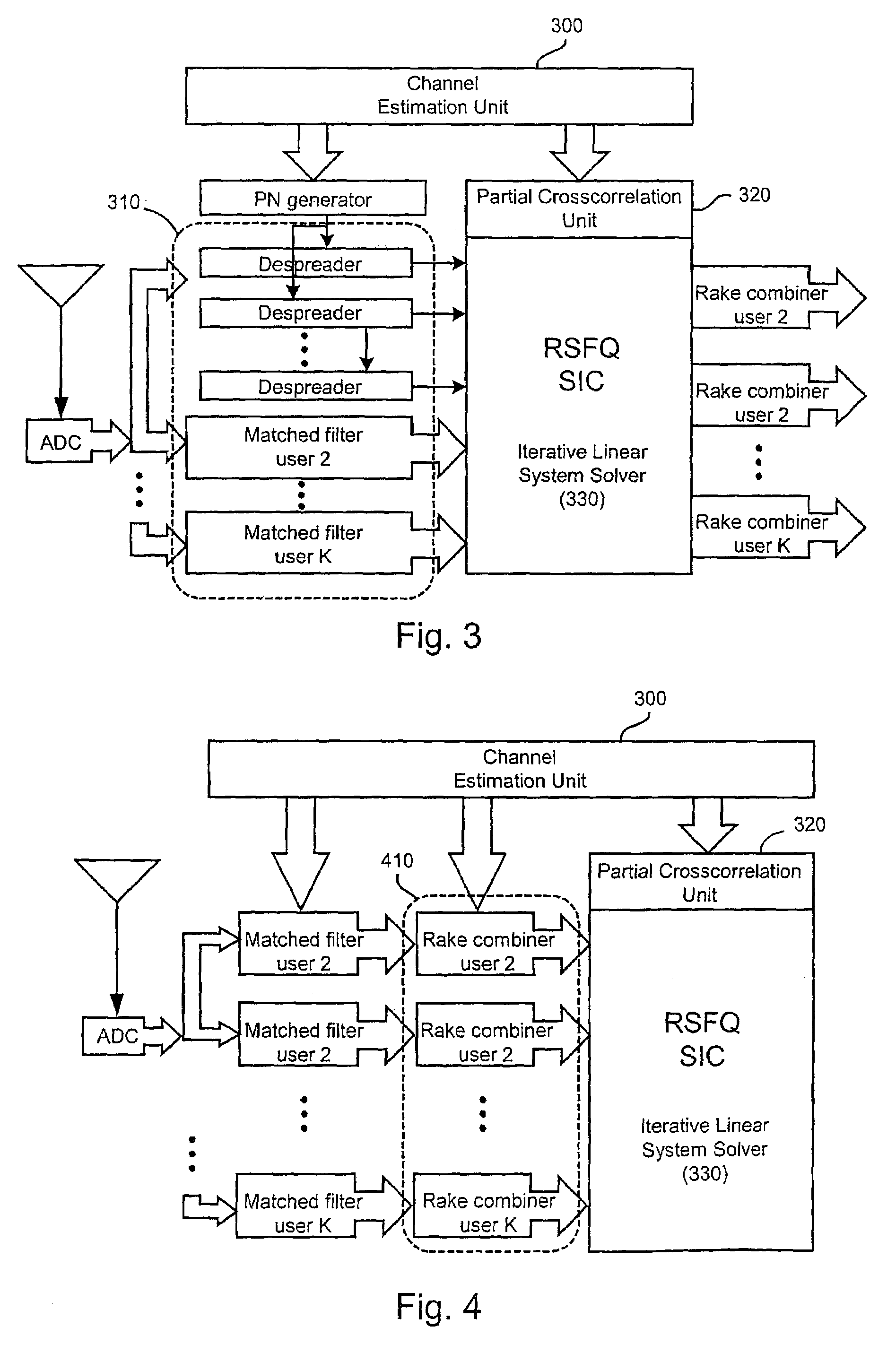Method and apparatus for multi-user detection using RSFQ successive interference cancellation in CDMA wireless systems
a wireless system and multi-user detection technology, applied in electrical equipment, radio transmission, transmission, etc., can solve problems such as interference that has a significant influence on cdma systems, problems such as worsening, and increasing the coverage area of the cell, so as to reduce interference, improve the uplink capacity of the w-cdma system, and improve the effect of cellular coverag
- Summary
- Abstract
- Description
- Claims
- Application Information
AI Technical Summary
Benefits of technology
Problems solved by technology
Method used
Image
Examples
first embodiment
[0031]FIG. 3 shows a block diagram for a first embodiment architecture of the RSFQ SIC implemented into the digital signal processing chain of a W-CDMA base station receiver operating in accordance with the invention. The RSFQ SIC operates with data coming either from a despreader or matched filters 310. Inserted in this way into the signal processing chain the RSFQ SIC becomes an add-on component that does not require modifications to the other electronics.
second embodiment
[0032]FIG. 4 shows a block diagram for a second embodiment architecture of the RSFQ SIC implementation operating in accordance with the invention. Similarly, with RSFQ SIC operates with data coming after the Rake combiner 410 thereby requiring no other modifications to the electronics. The RSFQ SIC has three inputs: vector of despreaded symbols, vector of channels gains, and vector of relative channels delays available at the Channel Estimation Unit 300 (CEU). The base station receiver described supports coherent reception of the channel, a front-end digitizer with minimum required resolution 5 bits and 4 times oversampling over the chip rate 3.84 mcps, amplitude estimation for the channels, and the relative delay estimation for the channels.
[0033]With regard to the data channel, due to the successive method of interference rejection there is a trade off between system load, data rate and number of iterations required to reach target performance. The load of the system is defined as...
PUM
 Login to View More
Login to View More Abstract
Description
Claims
Application Information
 Login to View More
Login to View More - R&D
- Intellectual Property
- Life Sciences
- Materials
- Tech Scout
- Unparalleled Data Quality
- Higher Quality Content
- 60% Fewer Hallucinations
Browse by: Latest US Patents, China's latest patents, Technical Efficacy Thesaurus, Application Domain, Technology Topic, Popular Technical Reports.
© 2025 PatSnap. All rights reserved.Legal|Privacy policy|Modern Slavery Act Transparency Statement|Sitemap|About US| Contact US: help@patsnap.com



